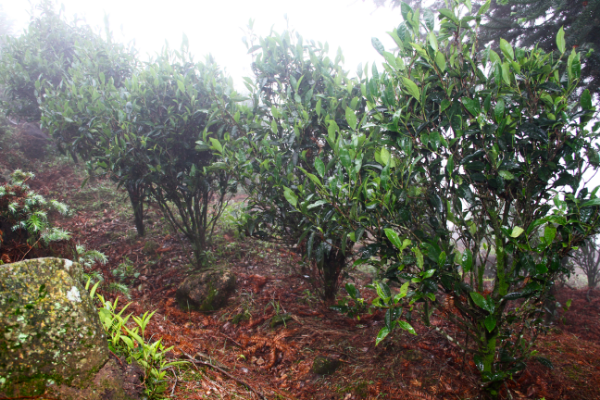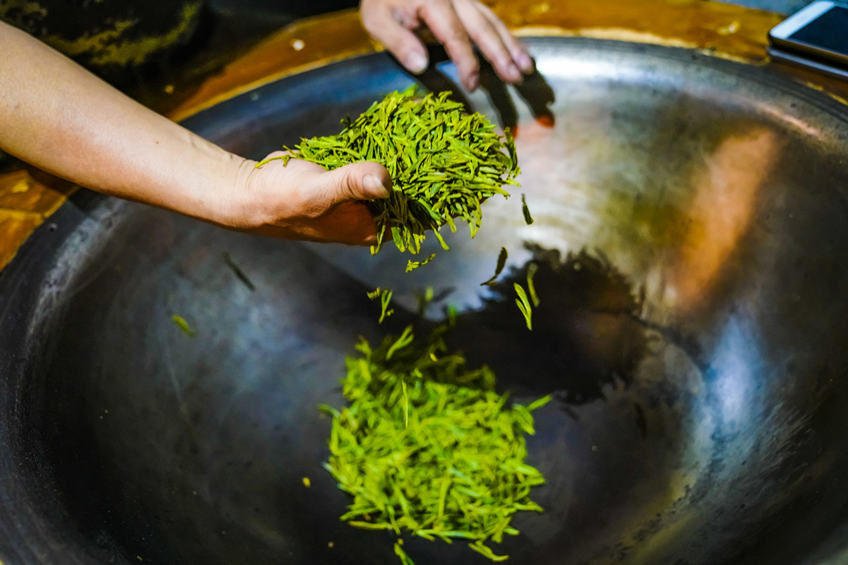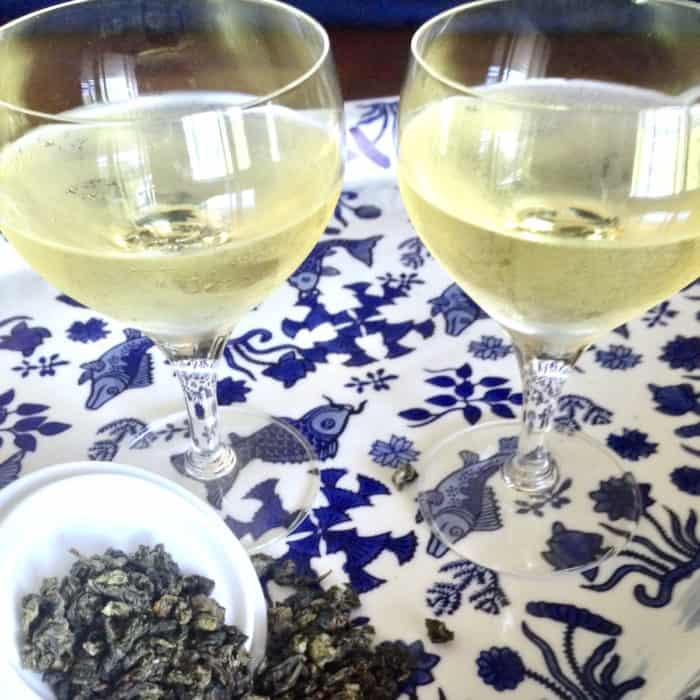Magnolia fragrance single fir Oolong tea production process sharing Magnolia fragrance single fir belongs to what kind of tea tree?
Hello, fans of Phoenix Dancong, if you open this article, you have opened my eyes! Because it means that you are curious about this complex oolong tea and you want to know more. I have noticed that many tea drinkers have a rough understanding of the production of oolong tea, but they do not seem to have a specific understanding of the purpose of each step, or the similarities and differences between Chinese mainland's oolong tea and Taiwan's oolong tea. I will answer all your questions and curiosity here. First of all, let's give a brief introduction. Phoenix Dancong is a kind of oolong tea produced in Chaoshan, Guangdong, China. Its appearance is very similar to Wuyi rock tea. It is said that Danzong tea is the ancestor of Wuyi rock tea, so it is the ancestor of all oolong tea. However, science has proved that the single fir mother tree is mutated from the daffodil Wuyi rock tea mother tree. The earliest historical record of Dancong tea was more than 800 years ago, and compared with rock tea, what is really special is its unique fragrance, its variety and long brewing time.
However, the harvest season usually begins in early April and ends in mid-late May. A leaf consists of a bud and two leaves. After picking the leaves, farmers first wait for the water on the surface of the leaves to dry, and then put the leaves in the sun to dry the moisture inside, which is the so-called sun withering. There is no standard for how long this process will take, which depends on the eyes of experienced farmers, but the general standard is that the leaf water loss does not exceed 10% 15%. After that, the leaves are brought indoors to wither, and in the process, the water in the cell wall is redistributed, which helps to regenerate more aromatic compounds, making the final product more aromatic. From here we have entered the most important and complex step, which depends entirely on the judgment made by farmers according to their experience, which is called "Shake Green" in Chinese and "Shake Green" in English. But in Cong's practice, farmers put the leaves in a large round basket made of bamboo and then skillfully shake the basket to make the leaves wavy in the basket. The role of this process is to rub the edges of the leaves against each other to break the cell wall and allow oxidation to occur, further, allowing the production of more aromatic compounds, which are unique to this variety. If you are lucky enough to walk into a farmer's green room, it is as if you have walked into the Fragonard perfume shop in Glass. The shaking process will be repeated several times, each for about 10 minutes. In the end, it all depends on farmers' judgment of duration and frequency, but in general, it should be repeated at least four times. The reason why this process is translated as "roll" may be due to the production method of oolong tea in Taiwan. Instead of shaking the leaves, they roll them into the shape of pebbles with their hands and repeat the process. The purpose of this process is exactly the same as shaking the Phoenix but Cong Tea. In addition, you can always find evidence of this step by looking at the wet leaves once you make oolong tea, whether you can find a leaf with red edges but green in the middle (green leaves with red edges).

Oolong tea, Phoenix Dancong red margin, green leaves after this, things become much easier, everyone can finally breathe. Farmers use frying to prevent leaves from oxidizing, a process known as "killing green". The final step in rolling the leaves into strips is for farmers to roll the leaves into strips with their hands before roasting. Dancong tea generally needs to be baked three times at about 120 ℃ / 248F, and because the temperature is not too high, the unique aroma of each variety still overwhelms the baking aroma, not the other way around. Viola, we're done! Recently, I met a farmer on social media who asked me if I wanted to try their Dancong tea. Naturally I said yes, and he kindly sent me the aroma of gardenia, duck shit, Ba Lao, Heaven Tongtian incense (Tongtian incense), mountain eggplant / mountain grill you (mountain eggplant leaves), and honey orchid. In the past few years, I have been working with farmers Liu and Huang, because they have not worked with foreign tea companies except me, so they have never felt the need to cater to the "needs of the American local market." I just urge tea drinkers to taste more tea and continue to learn this kind of tea, because I believe it will surprise you, and when it happens, I hope you can share your experience and knowledge with more tea lovers.
Important Notice :
前街咖啡 FrontStreet Coffee has moved to new addredd:
FrontStreet Coffee Address: 315,Donghua East Road,GuangZhou
Tel:020 38364473
- Prev

Cinnamon-flavored oolong tea is cinnamon added in the production process? What is the annual output of cinnamon single fir? Is it expensive?
When you think of charcoal barbecue, what do you think of? What do you think most about is sausage or chicken wings? Did you know that charcoal baked tea is very precious in the tea world. You may wonder why tea needs charcoal baking, because tea usually pursues its delicate taste, while coffee likes its strong roasting aroma.
- Next

Which kind of Phoenix Dancong tea is more suitable for making cold brewed tea? What are the characteristics of cold brewed oolong tea and black tea?
Summer is finally here! Although I personally like hot, sometimes it may be too much, I began to crave cold drinks. Come in, make tea cold! Cold brewing is a new method of making tea, which is different from the traditional hot brewing, it also has a lot of scientific basis.
Related
- What effect does Italian American coffee with filter paper have? Will coffee taste better if it is put on filter paper at the bottom of the powder bowl?
- What is the color difference in coffee beans? What are the characteristics of honey processed coffee beans? Why are the anaerobically treated coffee beans uneven in color?
- How does novice Xiaobai quickly get started and make coffee? Newbies learn to make coffee by hand and share the specific steps and process process!
- Costa tea has a shelf life of 100 years?! Expert: Unable to verify
- It's a huge uproar! American milk addition was rejected by Manner employees?!
- Mocha pot coffee bean recommendations| How fine and how much powder should be used for grinding? What parameter ratios do I need to use to make milk with Mocha pot coffee?
- What are the characteristics of the world's top ten coffee beans treated with Costa Rica honey? How to make black honey kadura from Tarazhu Pilon Processing Plant taste good?
- How to make deep-roasted coffee? What grinding water temperature does authentic Jamaica Blue Mountain No. 1 coffee use to brew it well?
- Selected high-grade rose summer coffee flavor tasting guide Why Panama rose summer has the aroma of flowers and fruits
- What equipment does a novice Xiaobai need to buy to learn to make coffee? Filter cup electronic scale bean grinder manual flushing pot purchase guide

